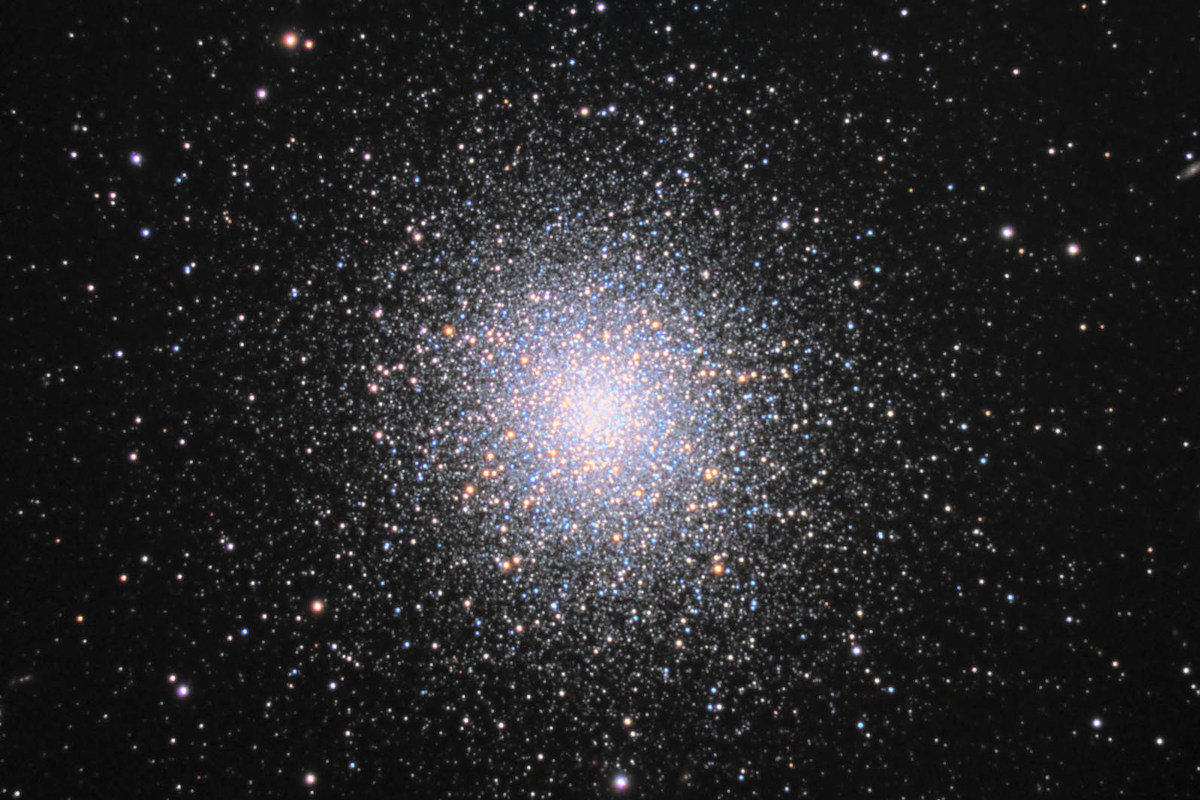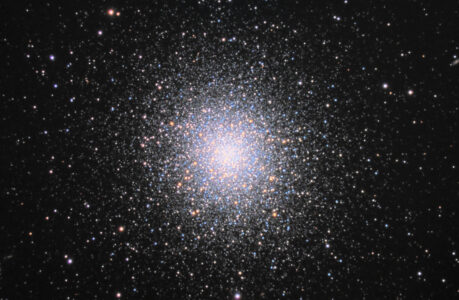The Hercules constellation is one of the most recognizable star formations in the night sky, known for its prominent shape and bright stars. According to Greek mythology, Hercules was a hero known for his incredible strength and bravery, and the constellation was named in his honour. Today, the Hercules constellation is still revered for its beauty and significance in astronomy.
If you’re in Ireland and interested in exploring the wonders of the night sky, the Hercules constellation is an excellent place to start. Here’s everything you need to know about viewing the Hercules constellation from Ireland.
When to View the Hercules Constellation
The Hercules constellation is visible from Ireland throughout the year, but it is best seen during the summer months. This is because the constellation is located in the northern hemisphere, which means that it is visible in the night sky for longer periods of time during the summer.
To view the Hercules constellation, it’s best to look towards the northeast after sunset during the summer months. You can also use a star chart or a mobile app to help you locate the constellation in the night sky.
Mythology of the Hercules Constellation
The Hercules constellation is named after the hero of Greek mythology, Hercules. According to legend, Hercules was the son of Zeus and a mortal woman named Alcmene. He was known for his incredible strength and bravery, and he completed many impossible tasks as part of his twelve labours.
One of the most famous stories associated with Hercules is his battle with the Nemean lion. According to the myth, the lion could not be killed by any weapon, so Hercules strangled it to death with his bare hands. The Nemean lion is also represented in the Hercules constellation, as one of the stars in the formation is named after the lion.
Other stars in the Hercules constellation are named after Hercules’ club, his shield, and his quiver, among other things. Together, these stars form the recognizable shape of the Hercules constellation in the night sky.
Viewing the Beauty of the Hercules Constellation
The Hercules constellation is a beautiful sight to behold, with its bright stars and intricate shape. Some of the most notable stars in the constellation include Rasalgethi, which is a red supergiant star, and Kornephoros, which is a blue-white giant star.
To truly appreciate the beauty of the Hercules constellation, it’s best to view it from a location with minimal light pollution. This means getting away from cities and towns and finding a dark, open area where the stars are more visible. Many parks and nature reserves in Ireland offer excellent opportunities for stargazing.
If you don’t have access to a telescope, don’t worry. The Hercules constellation is visible to the naked eye, and its bright stars make it easy to spot in the night sky. However, a pair of binoculars can help you see some of the more intricate details of the constellation.
The Hercules constellation is a fascinating and beautiful formation that is visible from Ireland throughout the year. Whether you’re a seasoned astronomer or just starting to explore the wonders of the night sky, the Hercules constellation is a great place to start. With its rich mythology and breathtaking beauty, this constellation is sure to leave you in awe. So, grab a star chart, find a dark location, and prepare to be amazed by the wonders of the Hercules constellation.
How can I see the constellation of Hercules from Ireland?
To see the constellation of Hercules from Ireland, you will need to wait for a clear night with minimal light pollution. You can then look towards the northeast after sunset during the summer months, as this is when the constellation is most visible.
It is best to find an open area away from cities and towns, as light pollution can make it difficult to see the stars. Many parks and nature reserves in Ireland offer great opportunities for stargazing.
To locate the Hercules constellation, look for the distinctive shape of a trapezoid with a diagonal line running through it. This shape is made up of some of the brightest stars in the constellation, including Kornephoros, Zeta Herculis, Eta Herculis, and Pi Herculis.
If you have trouble identifying the constellation, you can use a star chart or a mobile app to help you locate it in the night sky. Binoculars can also help you see some of the more intricate details of the constellation.
Remember to dress warmly and bring a blanket or chair to sit on, as stargazing can be a chilly activity. With a bit of patience and some clear skies, you should be able to see the magnificent Hercules constellation from Ireland.
The mythology of the constellation of Hercules
The Hercules constellation is named after the legendary hero of Greek mythology, Hercules (also known as Heracles). Hercules was the son of the god Zeus and a mortal woman named Alcmene. He was known for his incredible strength and bravery, and he completed many impossible tasks as part of his twelve labours.
One of the most famous stories associated with Hercules is his battle with the Nemean lion. According to the myth, the lion could not be killed by any weapon, so Hercules strangled it to death with his bare hands. The Nemean lion is also represented in the Hercules constellation, as one of the stars in the formation is named after the lion.
Other stars in the Hercules constellation are named after Hercules’ club, his shield, and his quiver, among other things. Together, these stars form the recognizable shape of the Hercules constellation in the night sky.
In addition to the Nemean lion, Hercules’ twelve labourers also included tasks such as capturing the Erymanthian boar, cleaning the Augean stables in a single day, and stealing the golden apples of the Hesperides.
Hercules was also known for his role in the Trojan War, where he fought alongside the Greeks against the Trojans. According to some versions of the myth, Hercules was responsible for shooting the arrow that killed the Trojan prince Paris.
Despite his incredible strength and bravery, Hercules was not without his flaws. In fact, he was infamous for his temper and his tendency to act impulsively. In one well-known story, Hercules killed his wife and children in a fit of rage brought on by Hera, the wife of Zeus and Hercules’ stepmother.
Despite his flaws, Hercules remains a beloved figure in Greek mythology, and the Hercules constellation is a fitting tribute to this legendary hero.
The Stars in the constellation of Hercules
The constellation of Hercules is home to many bright stars, including some of the brightest in the night sky. Here are some of the most notable stars in the Hercules constellation:
- Rasalgethi (Alpha Herculis): Rasalgethi is a red supergiant star that is located near the centre of the Hercules constellation. It is one of the largest stars known to astronomers, with a diameter estimated to be around 700 times that of the Sun.
- Kornephoros (Beta Herculis): Kornephoros is a blue-white giant star that is the second-brightest star in the Hercules constellation. It is located near the northern edge of the constellation and is easily recognizable due to its brightness.
- Zeta Herculis: Zeta Herculis is a binary star system that is located near the centre of the Hercules constellation. It is composed of two stars that orbit each other every 34 years.
- Eta Herculis: Eta Herculis is another binary star system that is located near the centre of the Hercules constellation. It is composed of two stars that orbit each other every 118 years.
- Pi Herculis: Pi Herculis is a binary star system that is located near the western edge of the Hercules constellation. It is composed of two stars that orbit each other every 36 years.
In addition to these stars, the Hercules constellation also contains several deep-sky objects, including globular clusters, open clusters, and nebulae. One notable object is Messier 13 (M13), a globular cluster that is visible to the naked eye under dark skies. M13 is located near the edge of the Hercules constellation and is one of the brightest globular clusters in the sky.
Deep sky objects visible in the Constellation of Hercules
The constellation of Hercules is home to several deep-sky objects that are popular among astronomers and stargazers. Here are some of the most notable objects:
- Messier 13 (M13): M13 is a globular cluster located near the edge of the Hercules constellation. It is one of the brightest globular clusters in the sky and is visible to the naked eye under dark skies. M13 is composed of hundreds of thousands of stars and is estimated to be around 25,000 light-years away from Earth.
- Messier 92 (M92): M92 is another globular cluster located in the Hercules constellation. It is smaller and fainter than M13, but still visible to the naked eye under dark skies. M92 is estimated to be around 27,000 light-years away from Earth.
- NGC 6229: NGC 6229 is a globular cluster located near the centre of the Hercules constellation. It is smaller and fainter than M13 and M92, but still visible with a telescope. NGC 6229 is estimated to be around 26,000 light-years away from Earth.
- Hercules Cluster (Abell 2151): The Hercules Cluster is a galaxy cluster located in the northern part of the Hercules constellation. It is composed of hundreds of galaxies and is estimated to be around 500 million light-years away from Earth.
- Stephan’s Quintet: Stephan’s Quintet is a group of five galaxies located near the edge of the Hercules constellation. The galaxies are interacting with each other, causing distortions and tidal tails. Stephan’s Quintet is estimated to be around 300 million light-years away from Earth.
- Arp 272: Arp 272 is a pair of interacting galaxies located in the southern part of the Hercules constellation. The galaxies are in the process of merging, creating a bridge of gas and dust between them. Arp 272 is estimated to be around 450 million light-years away from Earth.
These deep-sky objects can be viewed with a telescope or binoculars under dark skies. It is recommended to use a star chart or mobile app to help locate these objects in the night sky.

